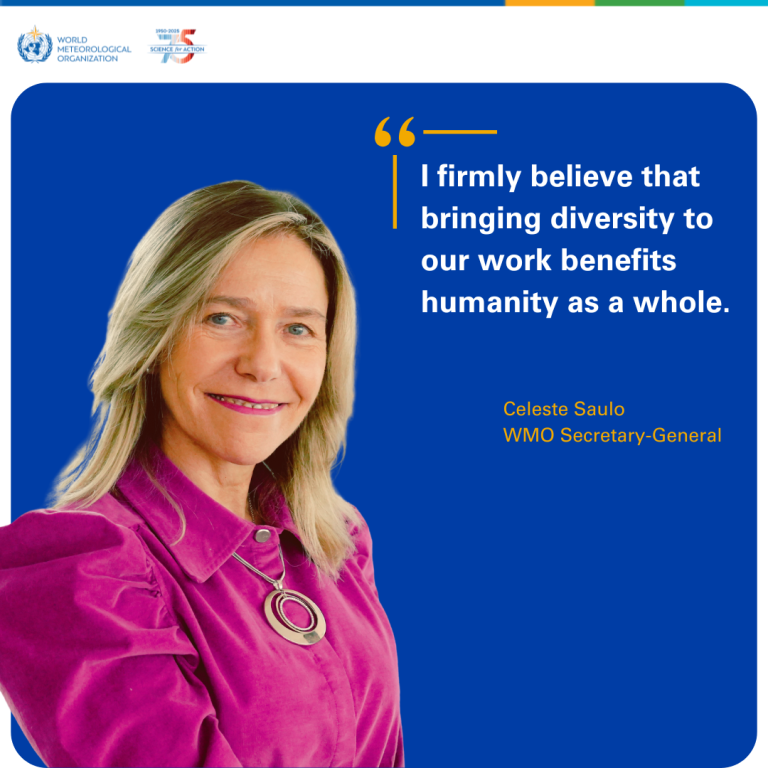Women and Girls in Science Day turns 10!
The International Day of Women and Girls in Science on 11 February is marking its 10th anniversary serves as a reminder that women’s participation is essential for building a better world through science and technology.

WMO Members observed the day with activities and social media posts highlighting that big advances have been made, with women now occupying many leadership positions and driving innovation.
“As the first female Secretary-General of the WMO, I am proud to be a role model to inspire the next generation of women and, especially girls. It gives me hope that a better world is ahead,” said Celeste Saulo.
“I firmly believe that bringing diversity to our work benefits humanity as a whole,” she said.
As an international gender champion, Celeste Saulo repeatedly stresses that gender equality is both a moral and strategic imperative. It underpins sustainable development.
WMO’s commitments include:
- Integrate gender considerations into all policies, programs, and activities of the WMO, ensuring that gender equality is a central focus.
- Advocate for increased representation of women in leadership positions within WMO and its constituent bodies, fostering an inclusive and diverse organizational culture
- Encourage more women in the fields of science and meteorology.
At international, national and local levels, there is a drive to improve access for women to technology, information, science education and technical training and to strengthen the position of women scientists and technologists.
Despite the progress, challenges continue.
Women still represent just one third of the global scientific community and continue to face an uphill battle in building careers in science, technology, engineering and math (STEM).

“The more that women are excluded from STEM, the more we limit our collective power to address urgent global challenges, from climate change and food security to public health and technological transformation,” said UN Secretary-General António Guterres in a statement.
“We can and must do more to level the playing field. By expanding scholarships, internships and mentorship opportunities to open doors for women and girls in STEM; creating workplaces that attract, retain and advance women in science; encouraging girls’ engagement in STEM from an early age; championing women leaders in science through the media; and dismantling gender stereotypes,” he said.
Women play a pivotal role in weather and climate-related sectors, yet they often face systemic barriers to full participation and leadership.
For instance, they have less access to climate information, agricultural advisory services, mobile phone technology and financial credits.
Women are very effective at mobilizing communities in the event of disasters. They are at the frontline of recovery. Women hold knowledge in natural resources and water management. They can be key actors in climate adaptation and mitigation.
This is why many WMO activities seek to redress the balance through gender-specific services or training programmes.
Gender Action Plan
WMO’s Gender Action Plan dates back to 2015 to improve gender equality in all parts of the organization. It was also born out of the recognition that weather and climate change affect men and women in different ways.
The World Meteorological Congress in 2023 updated that policy. WMO is committed to the goal of “achieving gender equality and building resilience through the provision of gender-sensitive weather, hydrological and climate services which respond to the specific needs and socioeconomic circumstances of women and men.”
The target decided was to reach a minimum 40% of female members participation in governance bodies and their working structures.
Further information at: https://www.womeninscienceday.org/

